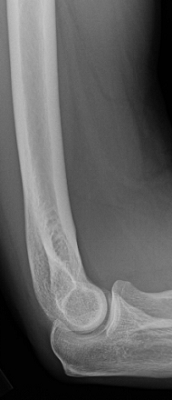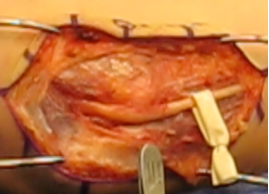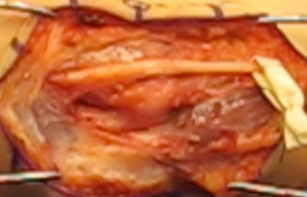Cubital Tunnel Syndrome
Anatomy and function of the elbow


The elbow is a hinge joint between the upper arm bone, the humerus, and the lower arm bones, the radius and the ulna. The ulna is on the inside of the elbow. The elbow functions similar to a hinge, bending and straightening. There is a nerve that runs on the inside of the elbow, the “ulnar” side, is called the “ulnar” nerve. The ulnar nerve travels behind the axis of the hinge of the elbow and is thus stretched and compressed with bending and straightening of the elbow. The ulnar nerve runs through a tight tunnel formed of bone, ligament, and tendon called the “cubital” tunnel. This nerve provides skin sensation to the small finger and ring finger. This nerve also powers nearly all of the muscles within the hand. This nerve travels directly beneath the skin at the elbow and is often referred to as the “funny bone”.
Cubital Tunnel Syndrome
The ulnar nerve can become pinched within the cubital tunnel. Pinching of this nerve causes elbow pain, numb and tingling feelings within the hand, and weakness in the hand. This problem can be caused by accidents or injuries, bone spurs within the elbow, or ligament tears within the elbow. Often there is no known cause.
This problem is worsened by leaning upon the nerve at a desk or in a car. In addition, because the nerve runs behind the axis of the hinge of the elbow, prolonged periods where the elbow is bent or activities that involve repetitive bending and straightening of the elbow can cause symptoms. Many people sleep with their elbows fully bent and this can increase symptoms. If this problem goes untreated for long periods of time, the nerve can become permanently injured.
Treatment


Usually, cubital tunnel syndrome can be treated by avoiding activities that irritate the nerve. This treatment may involve using elbow pads in jobs that involve leaning on the elbow, avoid keeping the elbow bent for long periods of time, and wearing a padded sleeve at night to avoid sleeping with the elbow bent for long periods of time. If there is no permanent nerve injury, non-operative treatment is usually successful and surgery is not usually needed for this condition.
Surgery involves carefully freeing the nerve from the tight tunnel in which it runs and moving the nerve in front of the axis of the hinge so that it will no longer be stretched or compressed with bending and straightening. This procedure is also commonly performed at the same time as procedures for elbow arthritis and elbow ligament tears. This procedure is called an “ulnar nerve transposition”.
This is an outpatient procedure with a low complication rate and a rapid recovery. However, no matter how careful Dr. Chalmers is with the ulnar nerve during the procedure, surgery around the ulnar nerve can cause nerve irritation. If the nerve becomes irritated it can cause burning-electrical pain radiating down the arm and into the hand, numbness in the ring and small fingers, and weakness in the hand. Nerve irritation almost always recovers, but it usually takes many months to fully resolve.
Click here to download the PDF.
You will need the Adobe Reader to view and print these documents 
